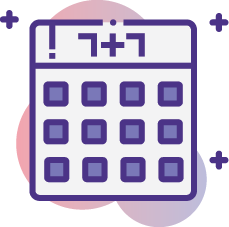
It’s time to brainstorm. We can brainstorm about our 2023 goals, how we will find time to go back to school, what our training plan looks like, what retirement looks like, and how we will train for a marathon or get on track with a healthy lifestyle.
If there are many choices and options, brainstorming helps you look at all the options and decide which one is best for you.
However, brainstorming is done best when you don’t do it alone. In a group is where you’ll get the most and best ideas.
Brainstorming is done best in groups of 5-8 people. While many of us think we are very good at brainstorming independently, the best brainstorming has many minds bouncing ideas off one another.
[ctt template=”3″ link=”eaamb” via=”yes” ]Brainstorming is done best in groups of 5-8 people.[/ctt]
Many years ago, I used the following activity to teach brainstorming. It was simple yet effective.
First, consider all the things a cat and a refrigerator have in common. Sure, it makes you laugh as you’ve never really thought of it before, but how many can you come up with? 10? 12? A handful, and yes, you can be creative for sure.
However, as soon as I made the groups larger, more ideas would come forward. One idea would popcorn into another one quickly. I routinely had groups who had over 20 things in common and often had groups who found more than 40 commonalities between a fridge and a cat!
The numbers 5-8 are important. With fewer than five people, you don’t have enough energy to keep the group going. Of course, there are exceptions, and groups of four do extremely well. Add more than eight participants; not everyone gets a chance to participate, killing the energy.
Everyone has to agree to abide by a few rules, and one of them is you can’t explain or justify your idea. As soon as you do that, you kill any popcorning.
For instance, in my cat and fridge activity, someone will typically suggest a commonality is that they each have a tail. Some will laugh, some won’t understand the tail is the plug, but a few will get it and shout out that they also have four feet, make noise, and leak!
It creates laughter and fun and a few very creative commonalities.
If you were planning your annual training day, someone might suggest you offer it in person this year at head office, which will lead to ideas of a local hotel, a nearby event space, an out-of-town option, a weekend retreat, and a tropical holiday.
You’re right – most of those ideas are not reasonable and not even possible in the budget, but sometimes the brainstorming does bring us ideas that may work. If we explain why we suggest an out-of-town option, we lose the other ideas that might come from that unreasonable idea.
We also can’t shoot down ideas. So if someone were to suggest a weekend retreat and another dismissed the idea, it would kill the brainstorming ideas and energy. We will sort through the ideas later; we are looking for quantity, not quality.
[ctt template=”3″ link=”2h8d6″ via=”yes” ]When brainstorming, don’t explain or shoot down ideas at first.[/ctt]
We all know that a tropical holiday isn’t going to happen for a work training retreat (sadly), but brainstorming might bring up a totally new innovative idea that might happen. If we take the time to debate each issue as it comes forward, we won’t get to the good one.
Put a time limit on your brainstorming activities. I gave everyone only two minutes when I played the cat and refrigerator game. Most creativity works well under this type of pressure. If we were to brainstorm what courses I would want to go back to school for and gave the group 20 minutes, we would probably all share the classes we’ve taken in the past and their merits. That’s sharing and not brainstorming. We would do that for 18 minutes, and then someone would notice the time, and the final two minutes would be the brainstorming.
Make it quick, don’t evaluate or explain.
Have only one note-taker in your group. Their responsibility is to write down every possible idea the team has come up with. Not to sort them, not to discuss nor debate. Just capture the ideas.
If the time runs out and you still are throwing out a lot of possibilities, extend the time frame another minute or two. If the energy is lacking, end the brainstorming. Just because you said you would brainstorm for three minutes doesn’t mean you need all of the time if you are out of ideas, nor does it mean you need to stop if you haven’t run out of ideas.
As a group, go through the list and get explanations for anything that doesn’t make sense. If you don’t understand how a cat can leak, ask your colleague what that means. If there are duplicates in your list, remove them.
At this point, you can also get rid of the extreme or silly answers which will never apply. Take it off your brainstorming list if you know you will never run the Boston Marathon. If getting your Ph.D. was a great idea a minute ago, reality sets in, and you can take it off your list too.
Take what is remaining, sort, and list the ideas you have. Then you or your group can sort through them to see what answer seems reasonable and viable. You can refer to your list anytime you need inspiration or new ideas.
Once you have the new ideas, it is up to you to implement them, but the brainstorming gave you far more than you could have created.
Give it a try when planning for your Christmas ideas, your New Year’s Eve plans, your 2023 goals, or your next vacation. It is fun to brainstorm with others, and you’ll come up with some great options.









